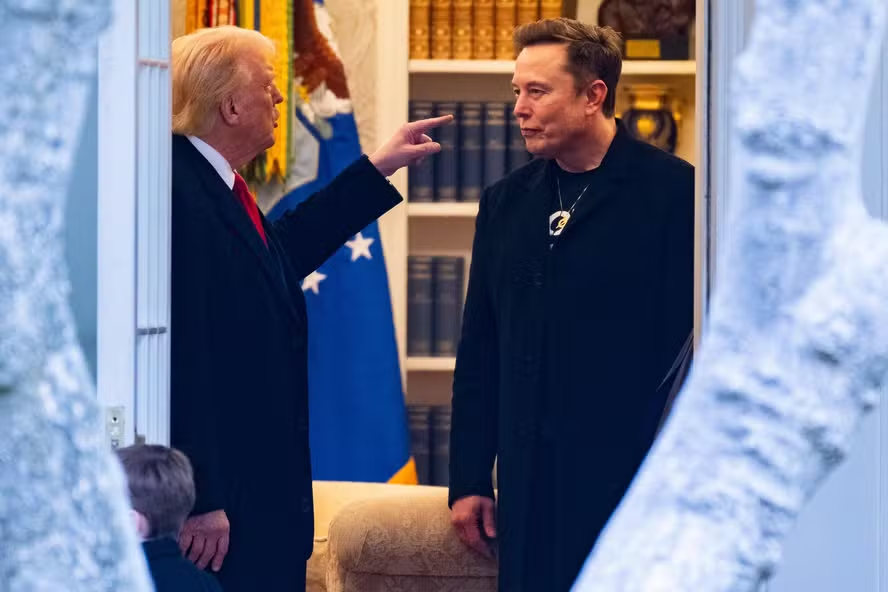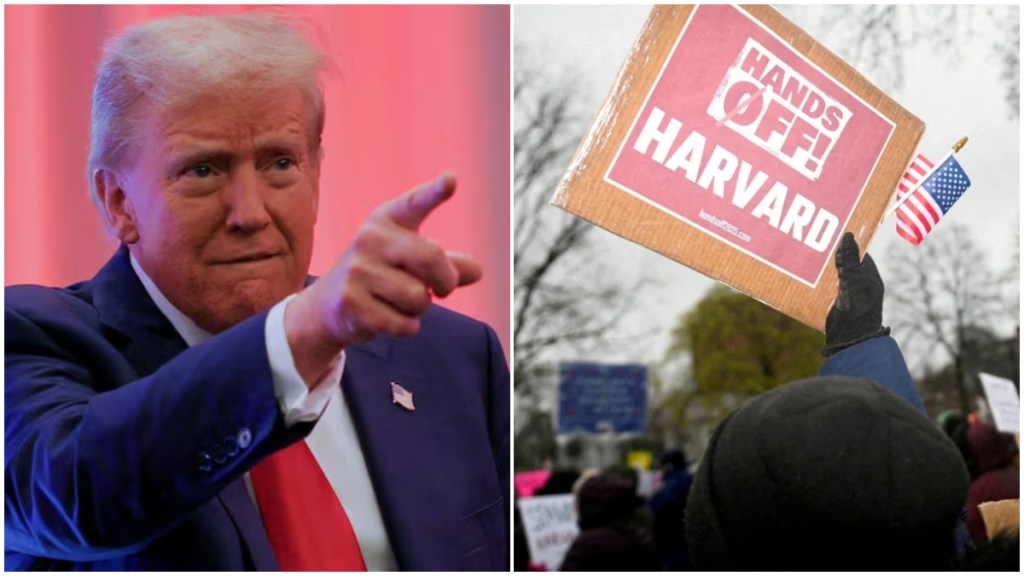At 11:35 AM on Saturday (the 15th), the area next to the Cathedral of Saint Sava in Belgrade seemed deserted. It would have been curious—given the importance of the cathedral as the largest Orthodox temple in Europe and its centrality to the city—if it weren’t for the protests. My group and I walked along the silent streets until we approached the intersection known as ‘Autokomanda’, one of the four points in the city where the protests began (the others being ‘Republik’ Square, ‘Gradska Opština Novi Beograd’ [New Belgrade City Hall], and near the monument to the creator of the modern Serbian language, Vuk Karadžić). Slowly, the general tension and apprehension dissolved into enthusiasm amid the sound of horns, whistles, and chants shouting ‘Pumpaj!’ (something like ‘Pump it’ in English). Estimates vary widely, but it is safe to say that at least three hundred thousand people were present, making this the largest protest in terms of number of participants in Serbia’s history.
Protesters came from all corners of the country, some walking up to 300 kilometers to make their presence felt, as many buses and trains to Belgrade were canceled. They were welcomed with food, medical assistance, and a great deal of excitement. Near my group was Bogdan, a 65-year-old man who walked from Niš in the south of the country to Belgrade, taking five days. Bogdan was a military veteran and mentioned he walked for the dream of seeing his grandchildren grow up in a truly free country with strong institutions.
The protest, known as ‘15 za 15’ (or 15th for 15), honors in its name the 15 victims of the collapse of the canopy at Novi Sad’s train station, the second-largest city in the country. The subsequent impunity of those responsible, the alleged arrogance in the government’s responses, and the claims of corruption and inappropriate cost-cutting that compromised the quality and safety of public works were the triggers for the student protests that began on March 9 and escalated to the ‘15 za 15’ protest.
The protests are led by university students, who do so democratically, holding plenary meetings and organizing themselves in small committees dedicated to specific activities, keeping their work efficient and quick. Their demands are: (1) to make public all documents related to the reconstruction of the Novi Sad train station; (2) amnesty for all who were arrested or detained due to the protests; (3) filing of criminal charges against those who attacked the protesters; (4) a 20% increase in the budget for universities across the country.
The protests were and are peaceful on the part of the students, who even collect trash at the end of the protests, but they are not received the same way. While we observed the 15 minutes of silence for the 15 victims, walking from ‘Autokomanda’ to the Parliament (the gathering point for protesters from the four locations, with an additional meeting point at ‘Slavija’ Square in case the streets around the Parliament couldn’t accommodate the number of participants), we were met with what appeared to be a sonic cannon (denied by the ruling party SNS, but recorded on video and in photos), which caused intense disorientation and immediate nausea in those closest to it, and panic among the rest of us. Previous protests had seen cases of students being run over and police violence, and even in this one, a small group allegedly pro-government (referred to by the protesters as ‘ćaci’, a reference to a famous pro-government graffiti that misspelled ‘đaci’, or ‘pupils’, to suggest they should ‘go back to school’) incited violence.
As an article in Zeit, a German newspaper, argued, the Serbian protests are about government transparency, strong institutions, accountability, anti-corruption efforts, and an effective rule of law. They seek these goals with respect for public and private property, a commitment to non-violence, and non-discrimination. These objectives are noble, pursued nobly, and entirely aligned with the values and mission of the European Union (EU). Still, they were met with silence from the EU, which seems focused on other matters, forgetting about the Serbs.
One might argue that the Russian war of aggression against Ukraine demands the EU’s resources and attention, and since these are limited, Serbia must be forgotten. Without wanting to relativize the horror unfolding in Ukraine or the significance of the event as a harbinger of a new order, if this were the argument, one would need to remember that nowadays, the EU suffers from the same situation with regards to the United States. Focusing its resources on containing China, the U.S. “forgets” its allies in Europe. The EU argues that it still has strategic importance and that its values must not be negotiated, which is curiously the same claims Serbia makes, a candidate country seeking EU membership. Moreover, if this were the root cause of Serbia’s neglect, then in other periods of greater geopolitical stability, the region would have been remembered, which was not the case.
Recently, international policy analysts explained the conflict in Ukraine on open TV, proposing that this was the first conflict on European soil since World War II. While watching, I noticed the complete forgetting of the wars in Bosnia (1992-1995) and Kosovo (1998-1999), a habitual oversight in Western analyses, but one that is curious for its regularity. After all, given the existence of the Karađorđevo Agreement between Serbs and Croats (thus between two independent countries, not one), the Bosnian War is not only an international conflict but the first war of aggression on European soil since World War II. With 200,000 dead, 1.3 million refugees and exiles, and cases of genocide (still not recognized by some countries), the Bosnian War seems too significant to be forgotten.
Similarly, the Kosovo War involved U.S. intervention and NATO bombing of Serbia, and it remains an unresolved conflict. Many of the causes of the conflict remain, and the “peace” was achieved through the threat of a superpower, the same one now seeking to withdraw from Europe to defend itself alone. Curiously, the actions taken by then-president Slobodan Milošević during both wars, along with the instability of his regime, were what fostered the non-violent student movement ‘Otpor!’ (“Resistance!”) not only to depose him and send him to trial in The Hague during the Bulldozer Revolution, but also to provide enough learning for ‘Otpor!’ members to train groups resisting peacefully in other revolutions. These revolutions later became known as the “Color Revolutions,” one of which occurred precisely in Ukraine, against the pro-Russia regime.
Yet, despite all the direct and indirect connections to the current war in Ukraine and the vast importance of these wars, the region is forgotten, as it was during the current protests in Serbia. Again, Zeit’s article suggests a reason: lithium. Lithium is a metal of immense importance for the electrification of the economy, and Serbia possesses it in abundance. With the “Green Deal”, a series of laws and regulations aimed at greater sustainability, the EU has made the extraction process costly within its own borders due to significant environmental damage. In July 2024, a deal was signed between Serbia and the EU encouraging the extraction of the mineral in Serbian territory. Areas like the Jadar Valley are being exploited by companies such as Rio Tinto, leading to increased contamination of the air, soil, and water sources used by local agriculture and the population. It made sense to keep Serbia outside the EU so that the Green Deal would not apply to it and it would remain under a government that facilitated exploitation.
Another explanation, unfortunately all too familiar to us Latin Americans, is the Western view that a non-democratic but cooperative government in its vicinity is preferable to political instability. We have lived through this with U.S. control over Cuba and Puerto Rico in 1898 (and still today in Puerto Rico), the forced removal of Nicaragua’s president in 1909 by the United States, the U.S. military support and covert invasion of Guatemala in 1954 to depose Jacobo Arbenz, the U.S. logistical support of Brazil’s military dictatorship in 1964, and while the list could go on with many other Latin American examples, we could also include the Vucić government, supported by the EU.
Despite the EU’s complete neglect, the Serbian people continue their beautiful march. May it be fruitful, even if not painless.
References:
https://www.zeit.de/politik/ausland/2025-03/serbien-demonstrationen-eu-vucic



